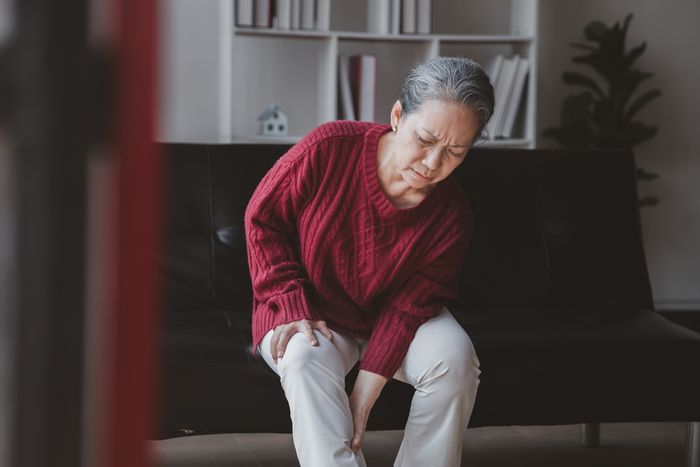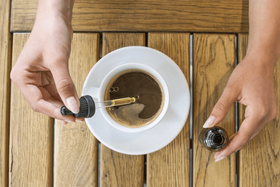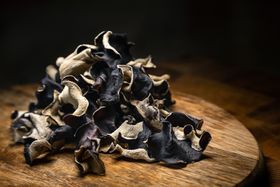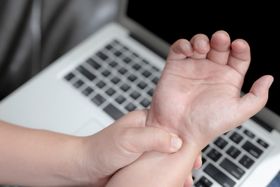Menopause Muscle Pain: Causes & 4 Tips for Relief
Published April 10, 2023.

Menopause triggers many symptoms in women, such as muscle and joint pain, as the balance between hormones changes. This added discomfort, along with the other annoying symptoms of menopause, can make daily life more difficult.
» Need help finding your personalised wellness plan? Let our quiz help you out
Relationship Between Menopause and Muscle & Joint Pain
There are oestrogen receptors all over the body, and a decrease in oestrogen affects cartilage due to inhibited collagen production (1). This can lead to pain in the spine between intervertebral discs, facet joints and sacroiliac joints, as well as small joints in the fingers and ankles primarily via connective tissue (ligaments).
Similarly, the same hormonal decreases and physiological changes during menopause can lead to chronic muscle pain, breast tenderness, excessive bruising, and muscle cramps (2).
» Suffering from lower back pain? See our top physio exercises
Symptoms of Menopause Muscle Pain
Menopause-related muscle pain often feels different than regular muscle pain:
- Whole-body aches that are worse at night
- Higher inflammation that can trigger and increase bodily pain
- Flu-like aches and pains
- Increased stiffness
4 Tips for Menopause Muscle Pain Relief
1. Dietary Changes
Since inflammation may rise as a result of oestrogen decreasing, an anti-inflammatory diet can help to combat these changes. Soda and sweetened beverages, red meat, and processed carbohydrates all can increase inflammation, while foods that may decrease inflammation include:
- Leafy green vegetables
- Fruits
- Tomatoes
- Olive oil
- Nuts
- Fatty fish
Aside from this, ensuring you meet the recommendations of vitamins and minerals, such as those listed below, can help relieve symptoms of muscle and joint pain:
- Magnesium Magnesium is essential for bone health and muscle and nerve function, which can help your body mitigate these types of pain, and is found in whole grains and dark, leafy vegetables.
- Vitamin B6 During menopause, vitamin B6 can help reduce inflammation throughout the body, and can be found in fish like salmon and tuna, chickpeas, and poultry.
- Vitamin K Like magnesium, vitamin K is essential for bone health, and you can find it in green leafy vegetables like kale and spinach, as well as broccoli and Brussels sprouts.
- Calcium Calcium is essential for strong bones and functioning muscles and can be found in milk, yoghurt, cheese, and tofu.
- Vitamin C Ascorbic acid, otherwise known as vitamin C, is well-known to promote bone and cartilage health, while its antioxidant effects are great for mitigating the progression of age-related conditions, like menopause.
Abdominal weight gain is a common symptom of menopause, and reducing this weight can help alleviate menopause-related muscle and joint pain. This is often more difficult during menopause, so combining dietary changes and exercise yields the best chance of success.
2. Menopause-Friendly Exercises
Daily exercise can help decrease chronic pain. There are many menopause-friendly exercises that may help to decrease pain, such as yoga and other low-impact exercises that mobilise the body. Stretching in the morning can help to get the body moving and reduce morning pain while stretching in the evening can help you sleep better.
Pilates and strength training (with supervision) can also help build muscle, which can reduce muscle and joint pain.
» Menopause causing joint pain? See our top menopause-friendly exercises for sacroiliac joint pain
3. Increasing Oestrogen
Boosting oestrogen levels can help mitigate some of the symptoms, though there is considerable controversy about the risks of direct hormone replacement therapy and many people prefer natural methods (3).
At-home remedies include eating phytoestrogens found in soybeans and other legumes, regulating your diet, taking various supplements, and ensuring you meet all recommended minerals and vitamins.
» Learn more: our oestrogen-boosting lifestyle tips
4. Muscle-Specific Remedies
Heat pads, warm baths, and cold packs can help relieve muscle and joint pain related to menopause. Additionally, regular massages can also bring some relief, especially when combined with a warming massage oil, an oil containing anti-inflammatory properties, or one containing a natural pain reliever.
Find Relief From Menopause Muscle Pain
Self-help is a good place to start to decrease menopause-related muscle and joint pain along with over-the-counter pain remedies, vitamins and minerals, and good lifestyle habits constituting a healthy diet and exercise.
If your pain is severe and you do not respond to at-home remedies, then you should consult your doctor. Adding hormone replacement therapy may help relieve symptoms or at least reduce them to manageable levels. For many people, a combination of approaches is what produces the greatest relief.








